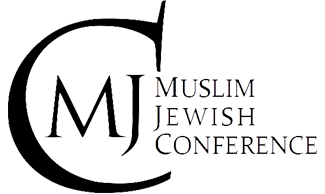Fourth Annual MJC (30th June–5th July 2013) – Sarajevo, Bosnia and Herzegovina
Sarajevo is the capital and the largest city of Bosnia and Herzegovina. The city is well-known for its cultural and religious diversity, as followers of Orthodoxy, Islam, Judaism and Catholicism have coexisted here for centuries.Due to this long and rich multicultural history, Sarajevo is sometimes called the “Jerusalem of Europe”. Until the 20th century, it was the only major European city to have a mosque, synagogue and church within the same neighborhood.
Although settlement in the area dates back to prehistoric times, the modern city arose as an Ottoman stronghold in the 15th century. Sarajevo has attracted international attention several times during its history. In 1914, the Archduke of Austria was assassinated in the city, which sparked the World War I. Seventy years later Sarajevo hosted the 1984 Winter Olympics. For nearly four years, from 1992 to 1996, the city suffered the longest siege of a city in the history of modern warfare during the Bosnian War for independence.
Today Sarajevo is developing steadily and is the fastest growing city in Bosnia and Herzegovina.
Committee Overview
1. Conflict Transformation
This committee offered an introduction to conflict transformation and equipped participants with elementary skills of the discipline, effective communication, leadership and facilitation of community projects and dialogue. Participants shared examples of best practices and effective action. The dangers of community engagement without sufficient preparation, which can sometimes be detrimental for the communities one wishes to help, were also discussed. The committee was designed for future activists, leaders, facilitators and organizers and for all participants seeking to engage in community development and collaborative projects. The members were offered an introductory training in basic skills and given an overview of fundamental theories and concepts of conflict transformation.
2. Anti-Semitism and Islamophobia through Cinema
This committee explored, reviewed, and performed an in-depth analysis of films that contain Islamophobic and anti-Semitic content, which results in promoting stereotypes among audiences. By critically reviewing such material through the lens of both Jewish and Muslim perspectives, participants were able to empathize with each other and discuss how the incorrect depictions of certain groups may lead to misconceptions, stereotypes and hatred. This committee also focused on the more nuanced representations of Jews and Muslims in film. A space was created for people who were interested in movies. They critically analyzed the presence of biased material based on the obvious and subtle representations of Jews and Muslims in Hollywood, European and Middle-Eastern cinema.
3. Back to the Basics: Introduction to Judaism and Islam
In previous years, the MJC has worked with a wide range of participants – people with little interfaith experience and people who are already pioneers. As an organization, the MJC wishes to support newcomers to intercultural dialogue, and therefore has created a committee which caters to Jews and Muslims who wish to learn more about the other faith. In 2013, the participants started by getting acquainted with basic principles, tenets and practices of both religions. This committee fostered an open space whereby all questions were welcome and open discussion was encouraged. A framework was provided for understanding basic information about each faith, followed by a thoughtful and in-depth interfaith dialogue. The committee was most suitable for young leaders who were looking to experience interfaith dialogue in an atmosphere that fosters open dialogue, mutual trust and support.
4. Gender and Religion
The purpose of this committee was to understand the role of gender in Islam and Judaism; to find a means of empowerment and education; to dispel stereotypes and misconceptions about the way women are treated in religions; and to enhance the presence and voice of women in religion. The committee members developed projects that address the role of gender in religion, community and politics, seeking to promote equality and change ideas about the roles of men and women in society. Male participants were strongly encouraged to join and many men actively participated in discussions and projects.
5. Hate Speech and its Influence on Public Opinion
This committee sought to define modern understanding of hate speech and how it relates to the Muslim/Jewish context in relation to societal and political relations. The participants shared personal experiences, and discussed more examples from all over the world citing blogs and mass media. The participants tried to understand the growing phenomenon, and examined how modern technology and new media have impacted the definition of hate speech. In doing so, the committee worked on grasping how we, as concerned active citizens, can detect hate speech and seek to strategically and tactfully engage with it in the public and private arena, counter it and develop networks for positive action and dialogue on the subject.
6. Education and the Effects of Historical Narratives
This committee explored how historical narratives in education form and shape opinions about faiths and the people associated with them. It aimed at deconstructing these narratives and at identifying the problems that they cause. They inhibit a sustainable dialogue amongst different religious traditions and between the religious and the secular. Finally, the committee explored the possibility of using the educational space in communities to promote alternative historical narratives and the benefits of doing so. People interested in the politics of identity, education, international relations and interfaith dialogue found the committee particularly relevant to their respective fields.

